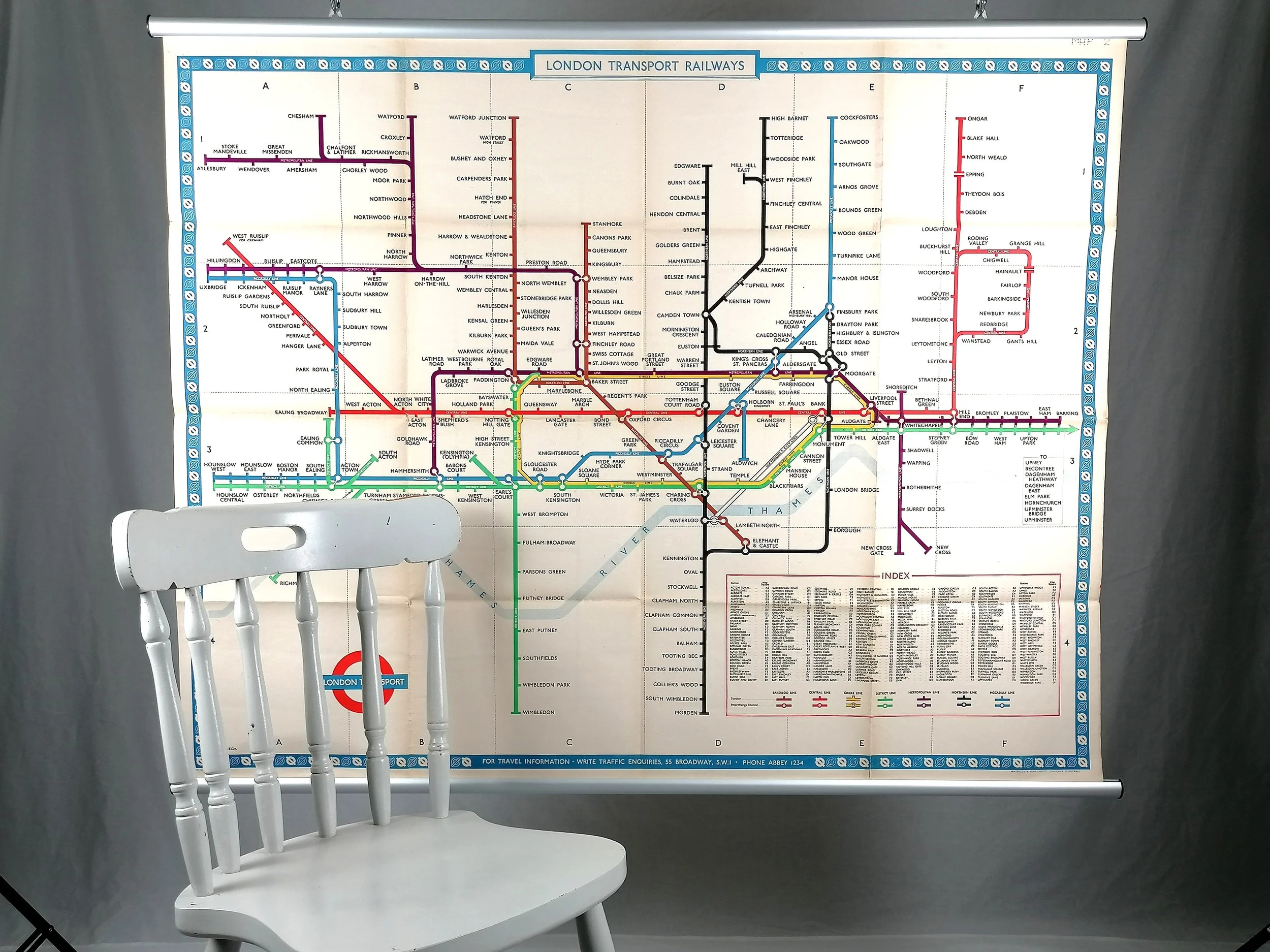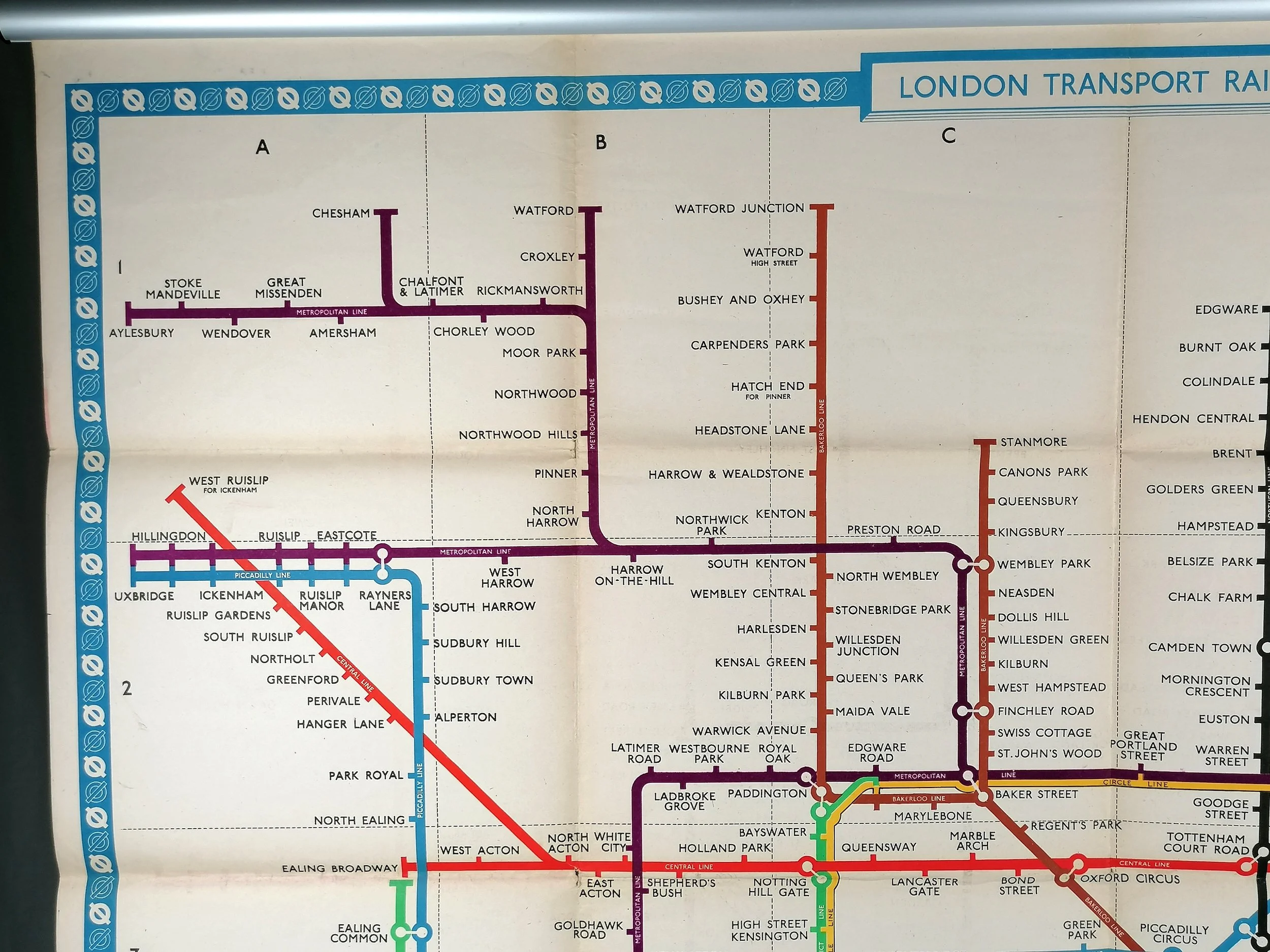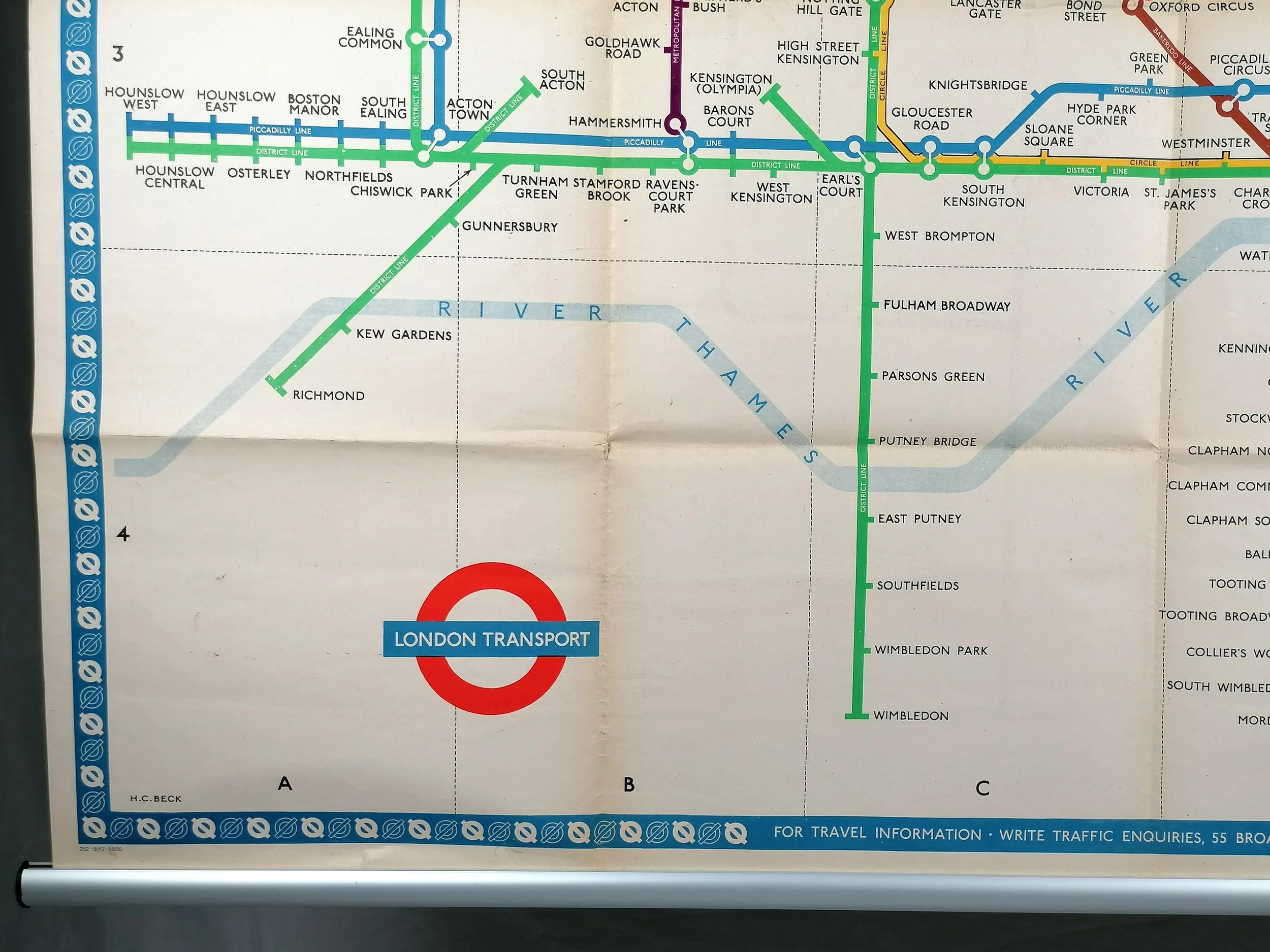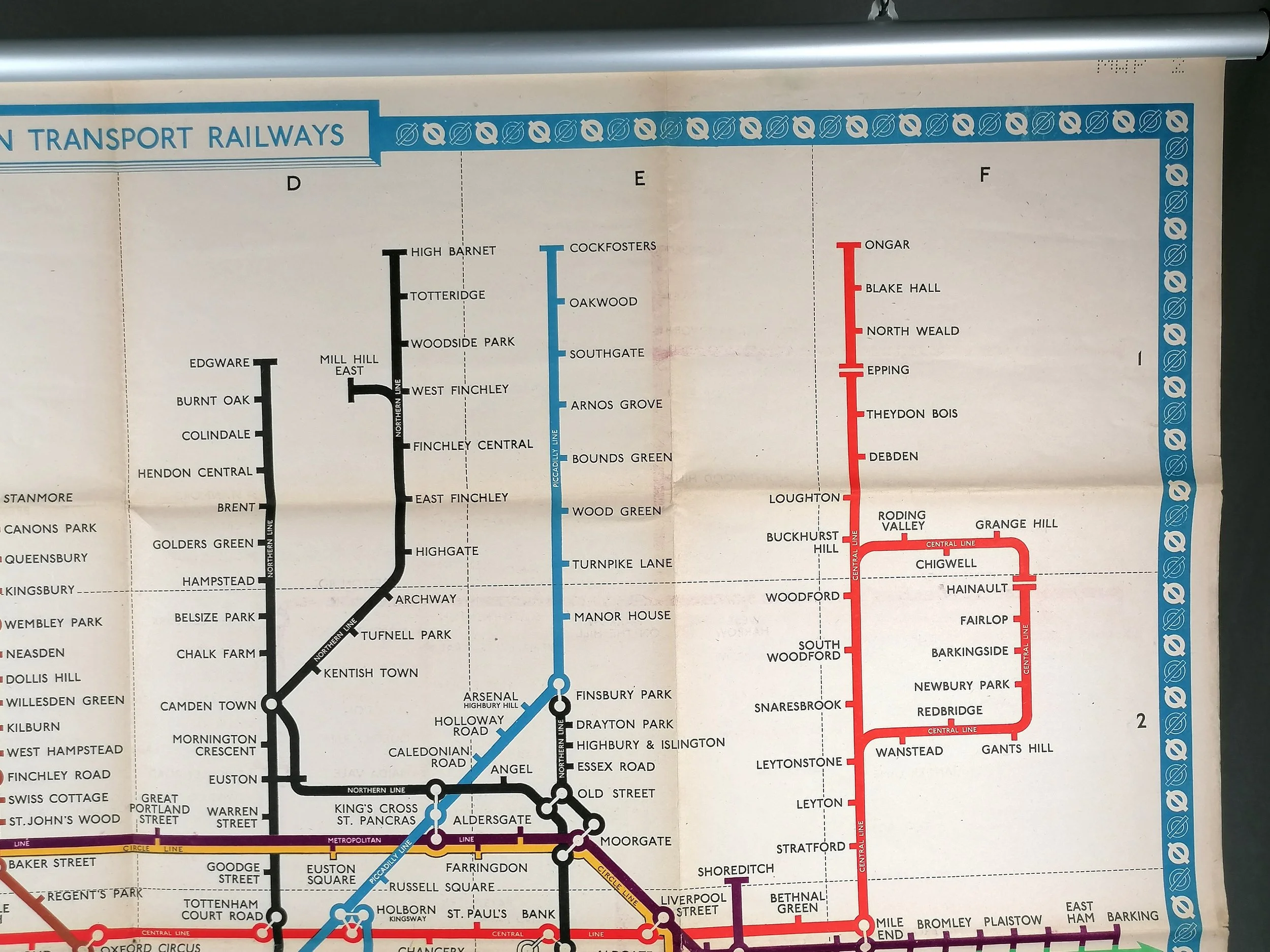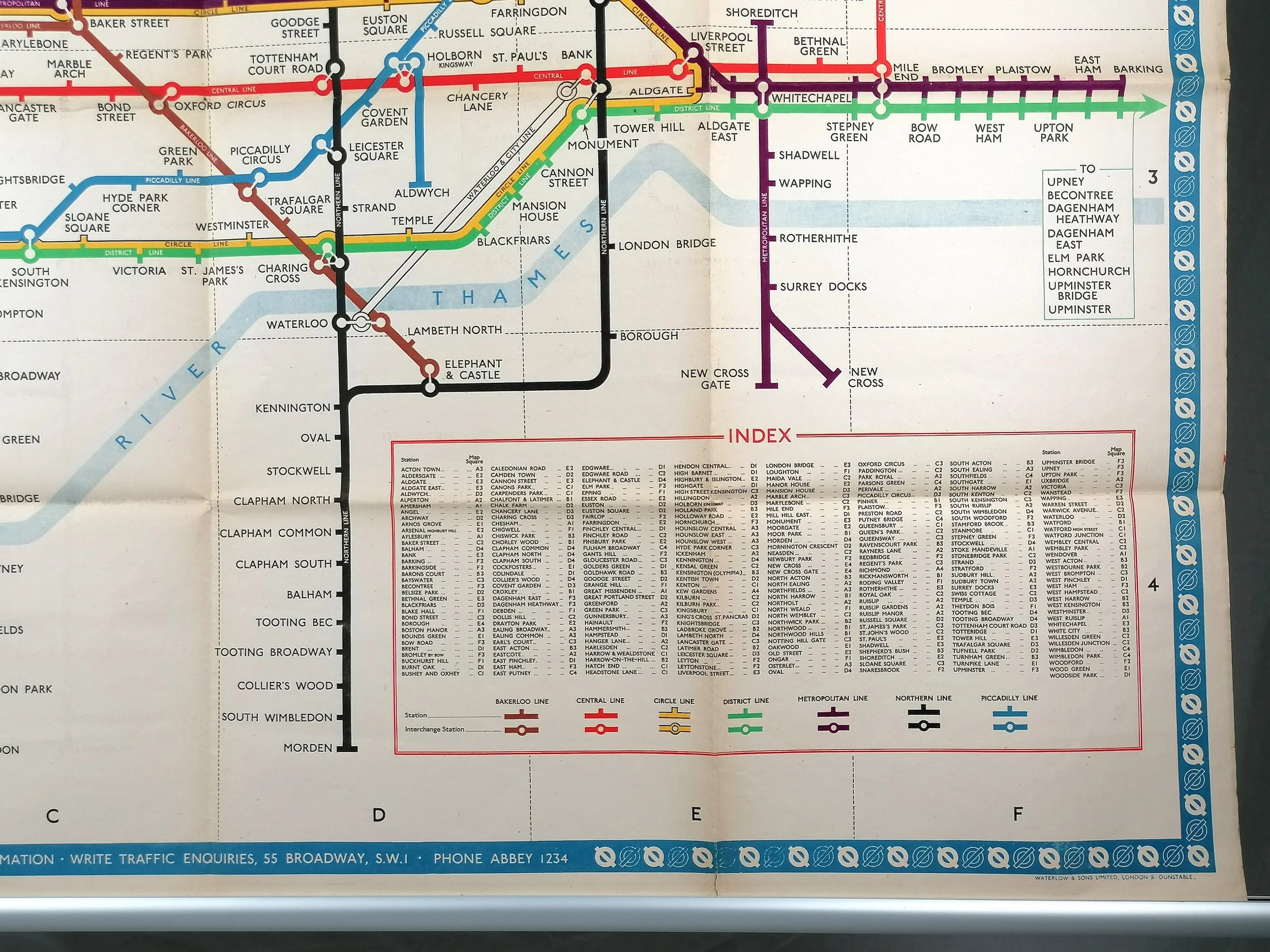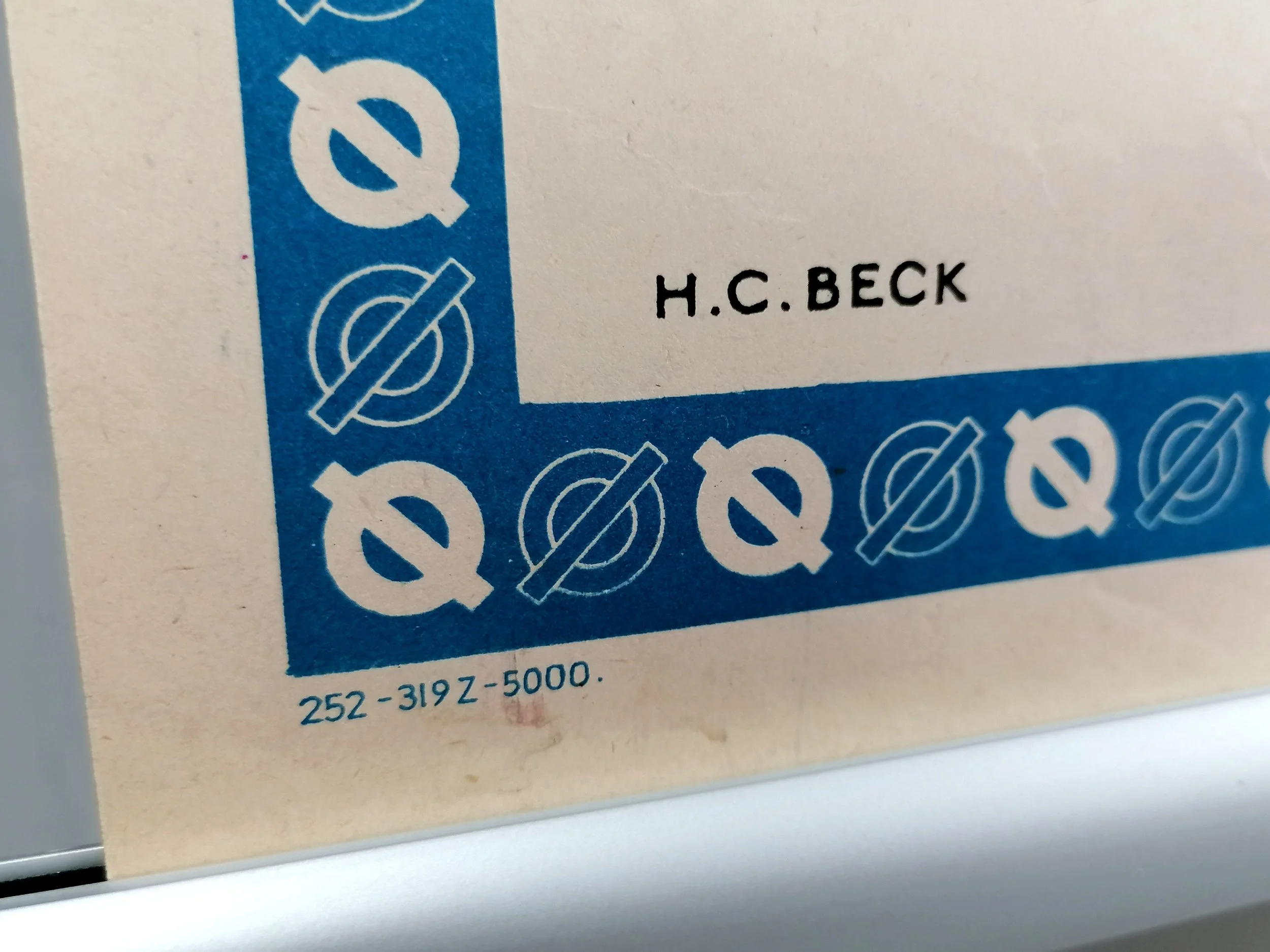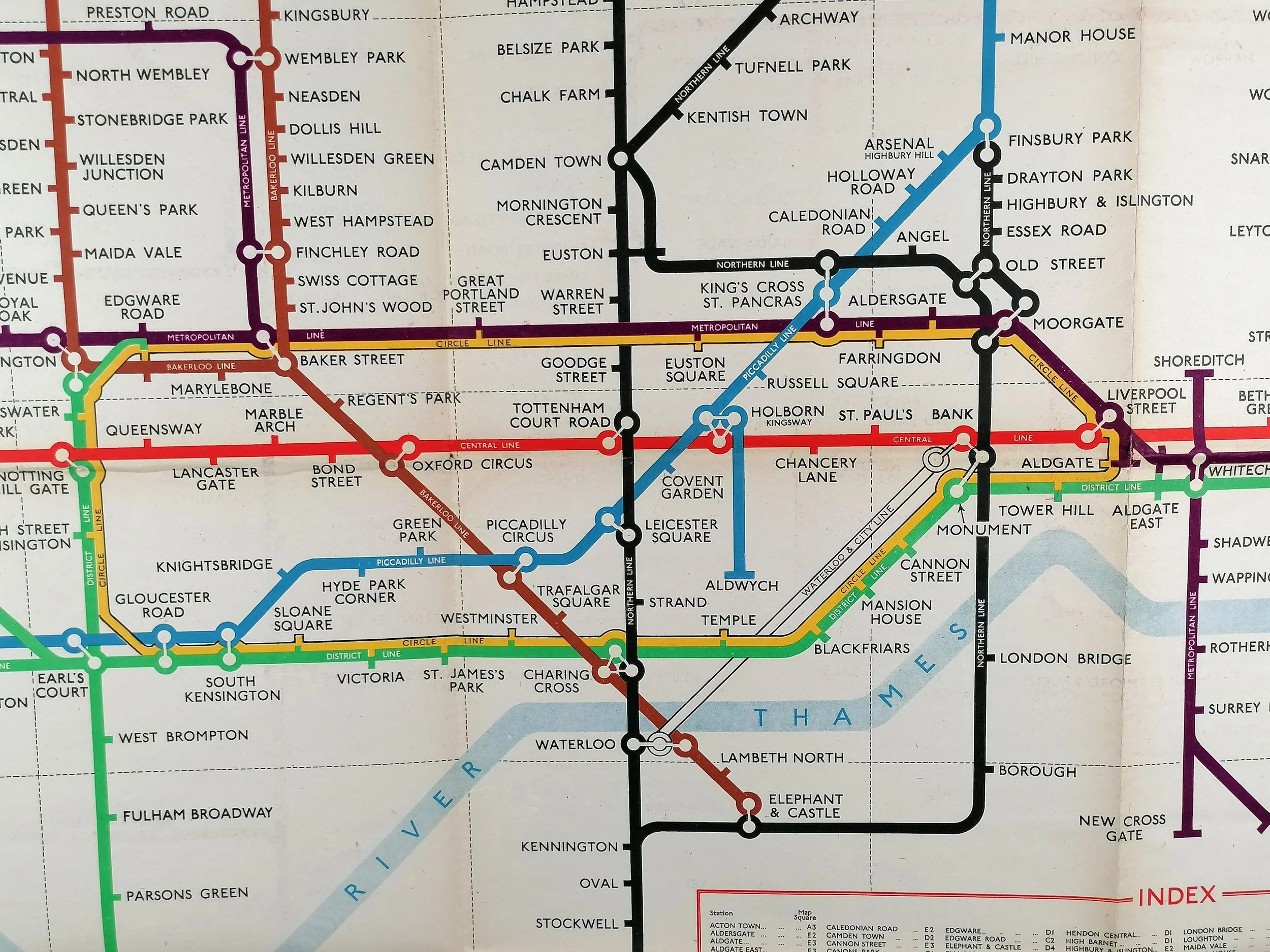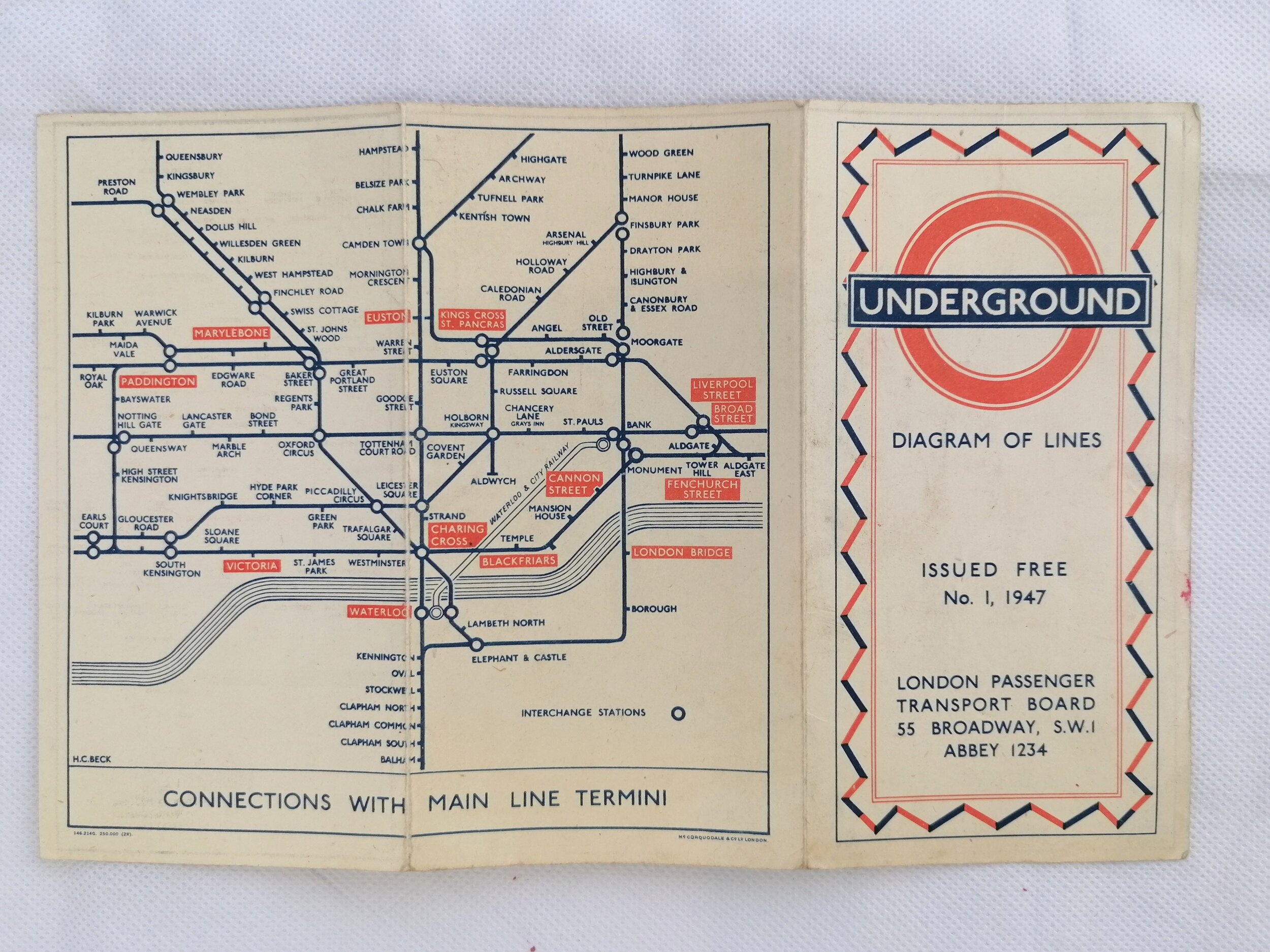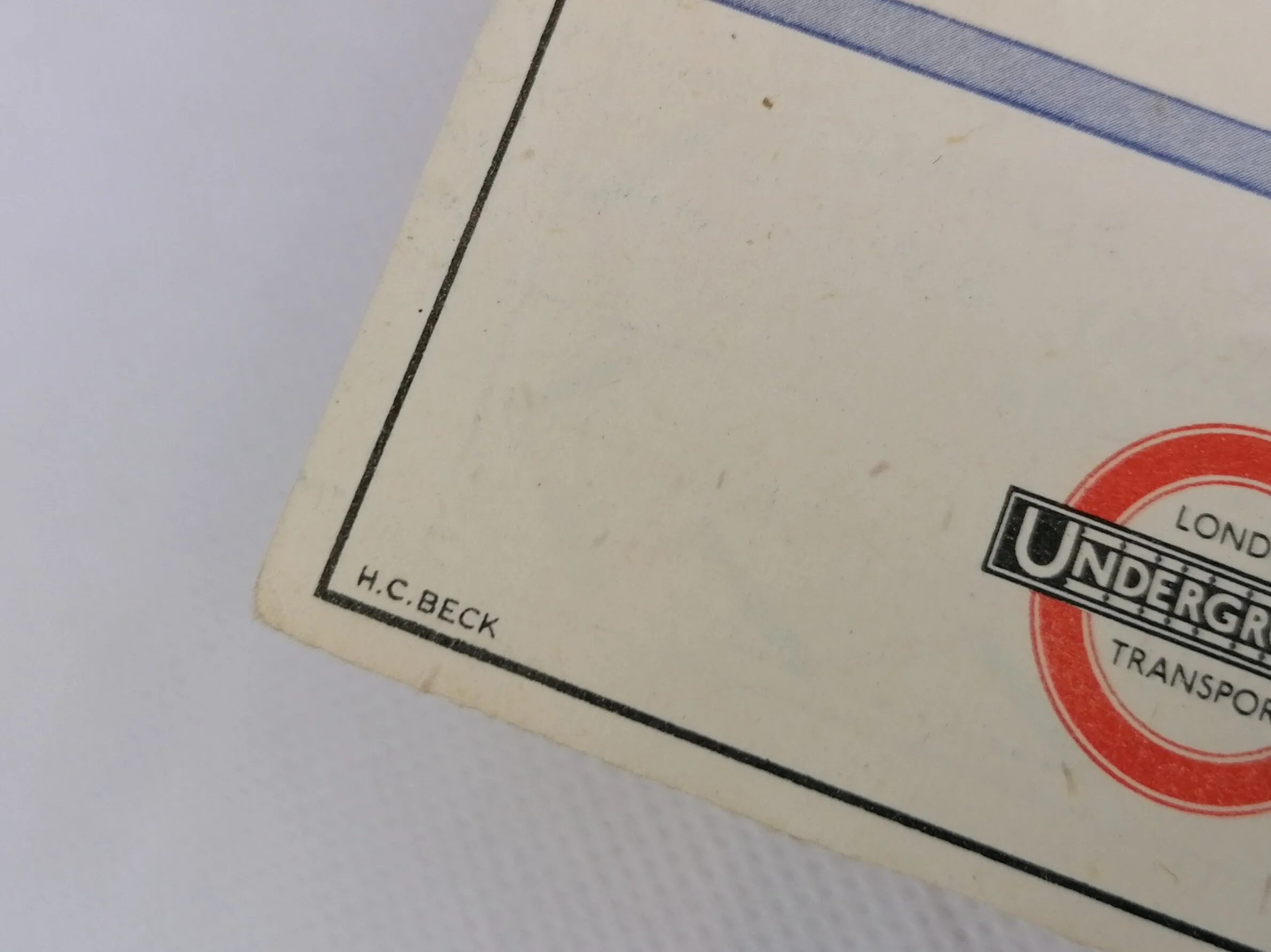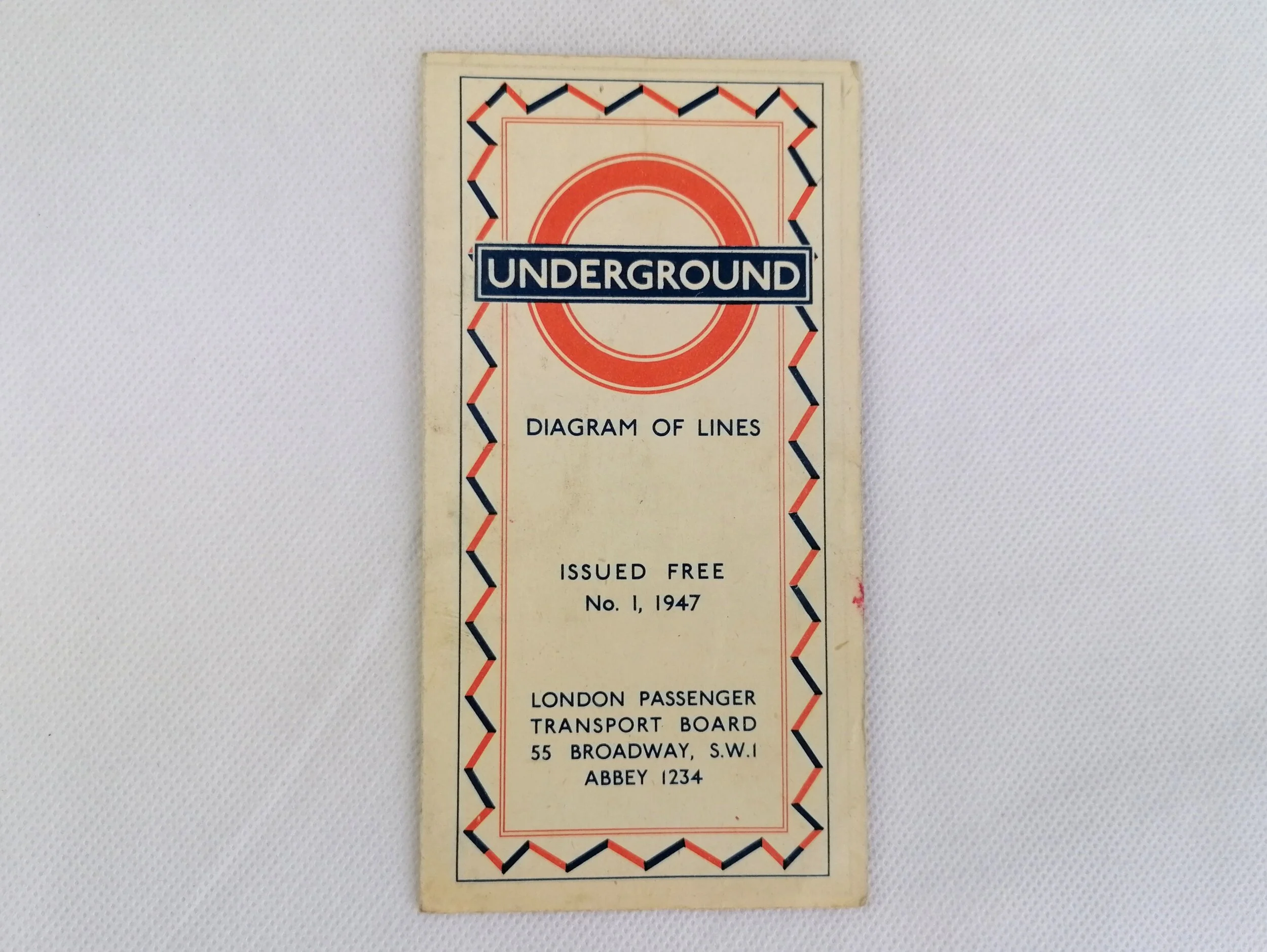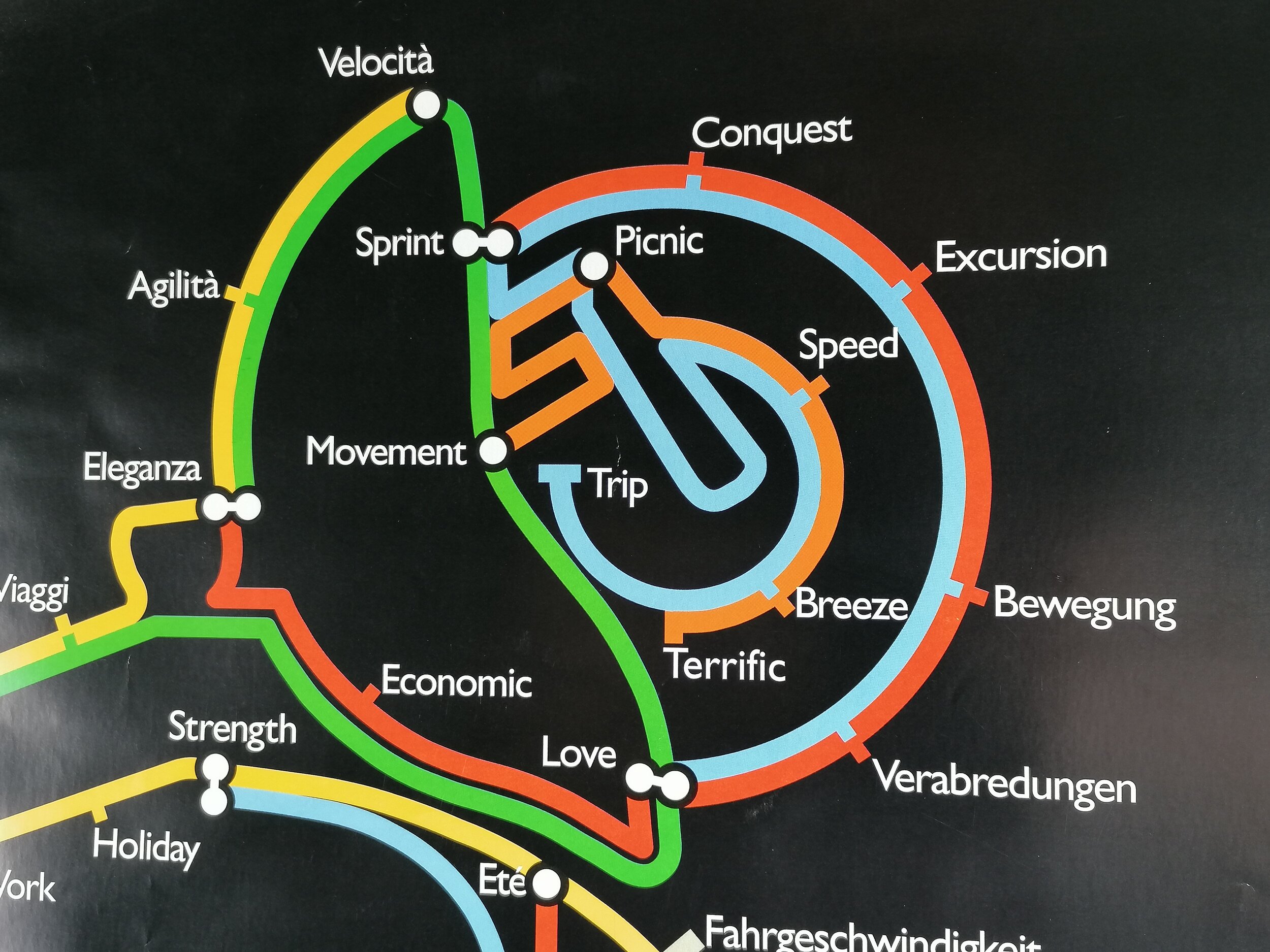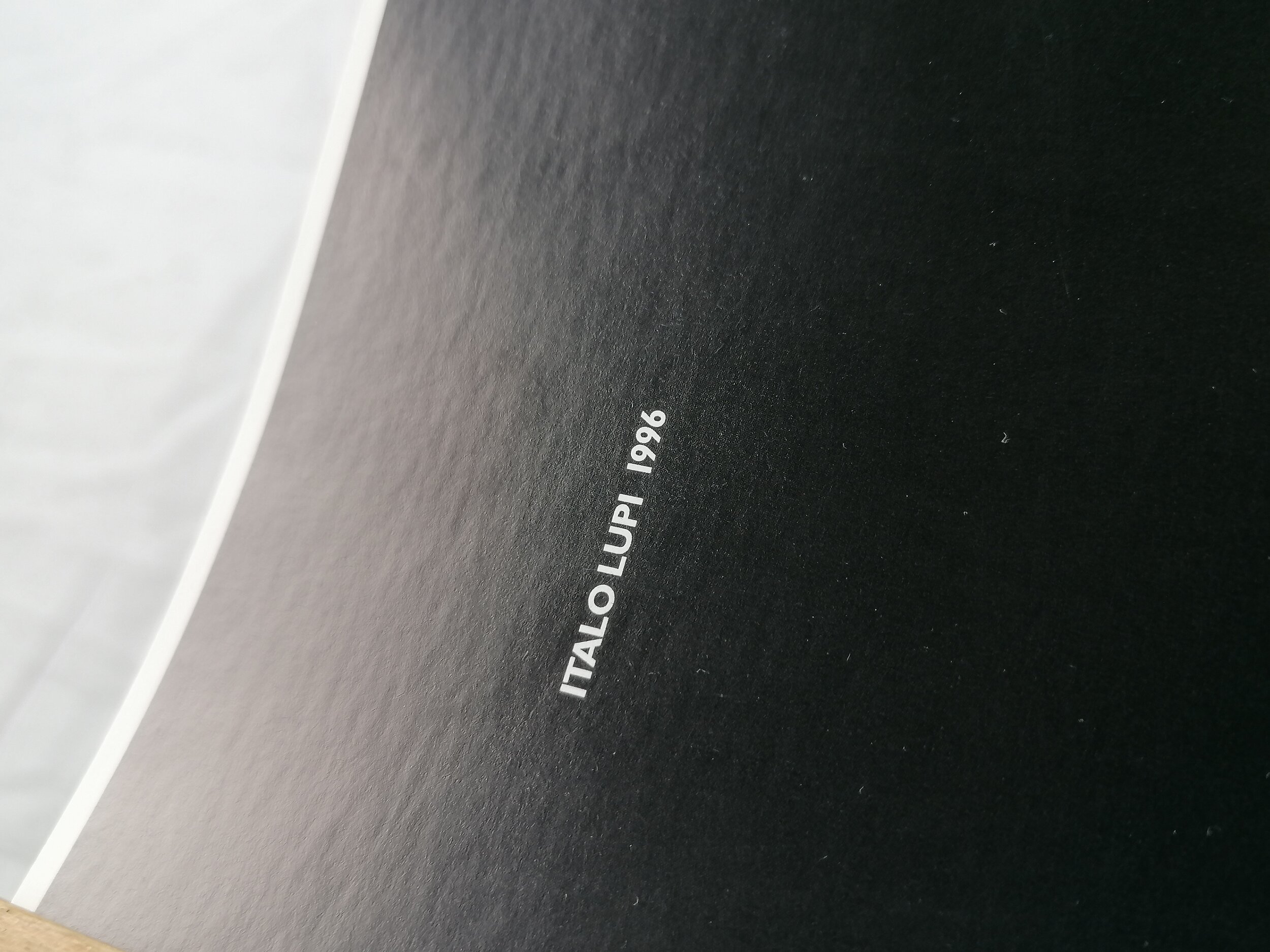1929 London Underground Pocket Map - FH Stingemore
Map of London’s Underground Railways
Designed by Frederick H Stingemore (FHS). Printed by Waterlow & Sons Printers for London Underground . 1929, 7th Edition. 16.7cm x 14.2cm Linen-card. Condition: Very good condition. it has a subtle horizontal fold across the middle of the map.
This is Fred Stingemore’s 7th revision of his 12-map series and dates approximately to 1929. Compared with the 6th edition (yellow cover), this issue sees the station names colour coded to match the lines they serve, a curious practise that must have caused confusion for stations that serve two or more lines! Stingemore also removed parts of the Thames that overlapped station names to improve clarity.
Despite a career spanning over 40 years in the London Underground Drawing Office, it is as HC Beck’s immediate predecessor as map designer that Frederick Stingemore is most well known.
Like many before him, Stingemore grappled with the density and sprawl of the Underground railway network to draft a series of pocket maps from 1925 to 1932. The Stingemore series of pocket maps saw 12 bi-fold linen-card editions, each with a distinctive colour cover. The map design improved in clarity with each iteration whilst remaining topographical in format with some distortion applied for outlying areas. It was Stingemore that had encouraged his colleague, Harry Beck, to resubmit his radical circuit diagram design after it was initially rejected. Beck’s diagram was published in January 1933.
Map of London’s Underground Railways
Designed by Frederick H Stingemore (FHS). Printed by Waterlow & Sons Printers for London Underground . 1929, 7th Edition. 16.7cm x 14.2cm Linen-card. Condition: Very good condition. it has a subtle horizontal fold across the middle of the map.
This is Fred Stingemore’s 7th revision of his 12-map series and dates approximately to 1929. Compared with the 6th edition (yellow cover), this issue sees the station names colour coded to match the lines they serve, a curious practise that must have caused confusion for stations that serve two or more lines! Stingemore also removed parts of the Thames that overlapped station names to improve clarity.
Despite a career spanning over 40 years in the London Underground Drawing Office, it is as HC Beck’s immediate predecessor as map designer that Frederick Stingemore is most well known.
Like many before him, Stingemore grappled with the density and sprawl of the Underground railway network to draft a series of pocket maps from 1925 to 1932. The Stingemore series of pocket maps saw 12 bi-fold linen-card editions, each with a distinctive colour cover. The map design improved in clarity with each iteration whilst remaining topographical in format with some distortion applied for outlying areas. It was Stingemore that had encouraged his colleague, Harry Beck, to resubmit his radical circuit diagram design after it was initially rejected. Beck’s diagram was published in January 1933.
Map of London’s Underground Railways
Designed by Frederick H Stingemore (FHS). Printed by Waterlow & Sons Printers for London Underground . 1929, 7th Edition. 16.7cm x 14.2cm Linen-card. Condition: Very good condition. it has a subtle horizontal fold across the middle of the map.
This is Fred Stingemore’s 7th revision of his 12-map series and dates approximately to 1929. Compared with the 6th edition (yellow cover), this issue sees the station names colour coded to match the lines they serve, a curious practise that must have caused confusion for stations that serve two or more lines! Stingemore also removed parts of the Thames that overlapped station names to improve clarity.
Despite a career spanning over 40 years in the London Underground Drawing Office, it is as HC Beck’s immediate predecessor as map designer that Frederick Stingemore is most well known.
Like many before him, Stingemore grappled with the density and sprawl of the Underground railway network to draft a series of pocket maps from 1925 to 1932. The Stingemore series of pocket maps saw 12 bi-fold linen-card editions, each with a distinctive colour cover. The map design improved in clarity with each iteration whilst remaining topographical in format with some distortion applied for outlying areas. It was Stingemore that had encouraged his colleague, Harry Beck, to resubmit his radical circuit diagram design after it was initially rejected. Beck’s diagram was published in January 1933.











